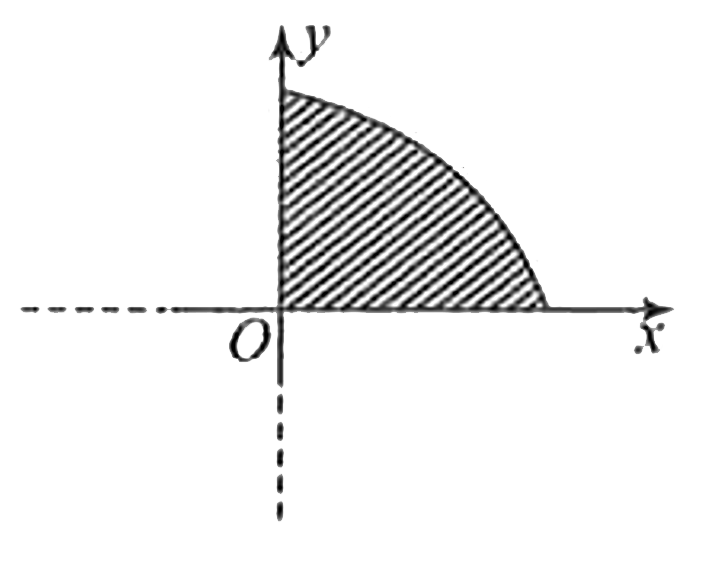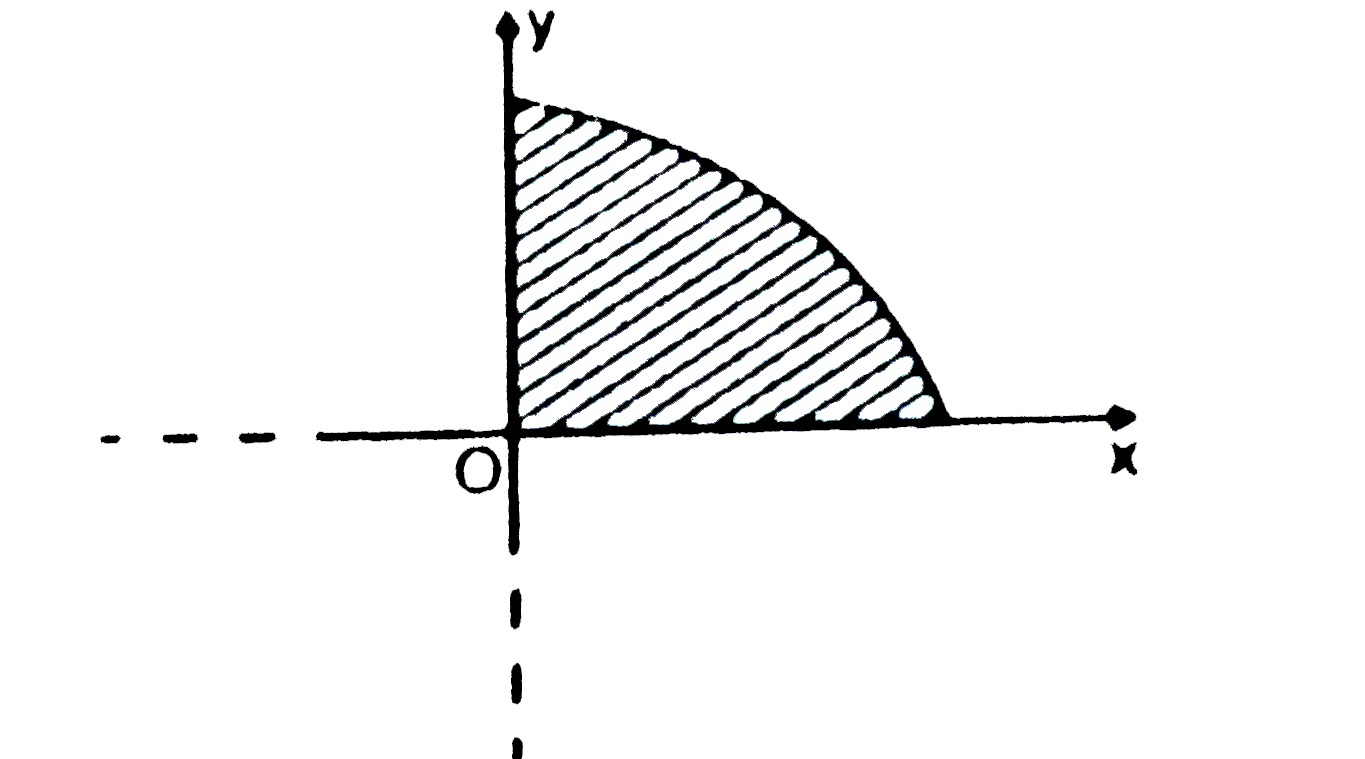A current carrying loop consists of 3 identical quarter circles of radius R, lying in the positive quadrants of the x-y, y-z and z-x planes with their centres at the origin, joined together. Find the direction and magnitude to at the origin.
To find the direction and magnitude of the magnetic field →B at the origin due to a current-carrying loop consisting of three identical quarter circles, we can follow these steps:
Step 1: Understand the Configuration
We have three identical quarter circles of radius R located in the positive quadrants of the x-y, y-z, and z-x planes. Each quarter circle contributes to the magnetic field at the origin.
Step 2: Magnetic Field Due to a Full Circle
The magnetic field at the center of a complete circular loop carrying current I is given by the formula:
B0=μ0I2R
where μ0 is the permeability of free space.
Step 3: Magnetic Field Due to a Quarter Circle
Since we are dealing with a quarter circle, the magnetic field at the center (origin) due to one quarter circle is:
Bquarter=B04=μ0I2R⋅4=μ0I8R
Step 4: Determine the Direction of the Magnetic Field
Using the right-hand thumb rule:
- For the quarter circle in the x-y plane, the current flows in a counterclockwise direction when viewed from the positive z-axis. Thus, the magnetic field at the origin due to this quarter circle points in the positive z-direction (along the +^k axis).
- For the quarter circle in the y-z plane, the current flows in a counterclockwise direction when viewed from the positive x-axis. Thus, the magnetic field at the origin due to this quarter circle points in the positive x-direction (along the +^i axis).
- For the quarter circle in the z-x plane, the current flows in a counterclockwise direction when viewed from the positive y-axis. Thus, the magnetic field at the origin due to this quarter circle points in the positive y-direction (along the +^j axis).
Step 5: Calculate the Total Magnetic Field
Now, we can sum the contributions from all three quarter circles:
→B=Bxy^k+Byz^i+Bzx^j
Substituting the values:
→B=μ0I8R^k+μ0I8R^i+μ0I8R^j
Step 6: Factor Out the Common Terms
Factoring out the common term μ0I8R:
→B=μ0I8R(^i+^j+^k)
Final Answer
The magnitude and direction of the magnetic field at the origin is:
→B=μ0I8R(^i+^j+^k)
We have three identical quarter circles of radius R located in the positive quadrants of the x-y, y-z, and z-x planes. Each quarter circle contributes to the magnetic field at the origin.
The magnetic field at the center of a complete circular loop carrying current I is given by the formula:
B0=μ0I2R
where μ0 is the permeability of free space.
Since we are dealing with a quarter circle, the magnetic field at the center (origin) due to one quarter circle is:
Bquarter=B04=μ0I2R⋅4=μ0I8R
Using the right-hand thumb rule:
- For the quarter circle in the x-y plane, the current flows in a counterclockwise direction when viewed from the positive z-axis. Thus, the magnetic field at the origin due to this quarter circle points in the positive z-direction (along the +^k axis).
- For the quarter circle in the y-z plane, the current flows in a counterclockwise direction when viewed from the positive x-axis. Thus, the magnetic field at the origin due to this quarter circle points in the positive x-direction (along the +^i axis).
Now, we can sum the contributions from all three quarter circles:
→B=Bxy^k+Byz^i+Bzx^j
Substituting the values:
→B=μ0I8R^k+μ0I8R^i+μ0I8R^j
Factoring out the common term μ0I8R:
→B=μ0I8R(^i+^j+^k)
The magnitude and direction of the magnetic field at the origin is:
→B=μ0I8R(^i+^j+^k)
Topper's Solved these Questions
- BOOK - NCERT EXEMPLAR ENGLISHCHAPTER - MOVING CHARNGES AND MAGNETISMEXERCISE - Long Answer Type Questions7videos
MOVING CHARNGES AND MAGNETISM
- BOOK - NCERT EXEMPLAR ENGLISHCHAPTER - MOVING CHARNGES AND MAGNETISMEXERCISE - Very Short Answer Type Question5videos
MOVING CHARNGES AND MAGNETISM
- BOOK - NCERT EXEMPLAR ENGLISHCHAPTER - MAGNETISM AND MATTER EXERCISE - All Questions24videos
MAGNETISM AND MATTER
- BOOK - NCERT EXEMPLAR ENGLISHCHAPTER - NUCLEIEXERCISE - Long answer type question10videos
NUCLEI
Similar Questions
A current loop consists of two identical semicircular parts each of radius R, one lying in the x-y plane and the other in x-z plane. If the current in the loop is i, the resultant magnetic field due to two semicircular parts at their common centre is
View SolutionA uniform surface charge of density σ is given to a quarter of a disc extending up to infinity in the first quadrant of x−y plane. The centre of the disc is at the origin O. Find the z-component of the electric field at the point (0,0,z) and the potential difference between the point (0,0,d) and (0,0,2d)
 View Solution
View Solution
Knowledge Check
- Question 1 - Select One
A 4 A current carrying loop consists of three identical quarter circles of radius 5 cm lying in the positive quadrants of the x-y, y-z and z-x planes with their centres at the origin joined together, value of B at the origin is
Aμ010(ˆi+ˆj−ˆk)TBμ010(−ˆi+ˆj+ˆk)TCμ05(ˆi+ˆj+ˆk)TD10μ0(ˆi+ˆj+ˆk)T - Question 2 - Select One
A current carrying circular loop of radius R is placed in the x-y plane with centre at the origin. Half of the loop with x>0 is now bent so that it now lies in the y-z plane.
AThe magnitude of magnetic moment now diminishes.BThe magnetic moment does not change.CThe magnitude of →B at (0,0,z),z>>R increases.DThe magnitude of →B at (0,0,z),z>>R is unchanged.
Find the distance of the plane 2x−y−2z−9=0 from the origin.
View SolutionA uniform surface charge of density σ is given to a quarter of a disc extending upto infinity in the first quadrant of x-y plane. The centre of the disc is at the origin O. Find the z-component of the electric field at the point (0,0,z) and the potential difference between the points (0,0,d) & (0,0,2d).
 View Solution
View SolutionFind the equation of the sphere which has centre at the origin and touches the line 2(x+1)=2−y=z+3.
View SolutionThe radius of the larger circle lying in the first quadrant and touching the line 4x+3y−12=0 and the coordinate axes, is
View SolutionFind the distance of the plane 3x−4y+12z=3 from the origin.
View SolutionA current carrying circular loop of radius R is placed in the x-y plane with centre at the origin. Half of the loop with x>0 is now bent so that it now lies in the y-z plane.
View Solution

